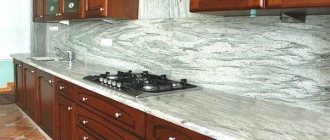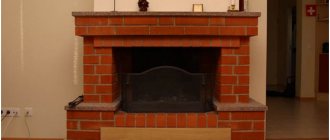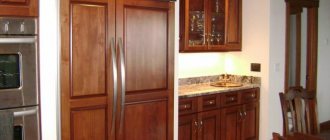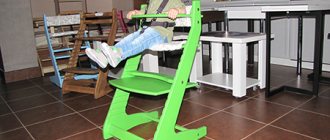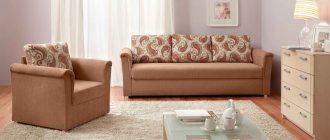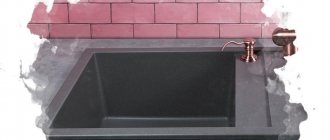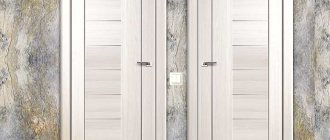Are you planning to renovate your bathroom: you will be changing the plumbing fixtures. Since the room is small, we decided to install a corner toilet, and the best one at that. The device has not yet been purchased. Which one to choose - there are many options: each model has its own advantages and disadvantages. We offer for consideration the best corner toilets - floor-standing with a combined cistern and wall-hung with hidden installation. The presented models were highly appreciated by users and specialists - making the right choice will not be difficult.
Advantages and disadvantages
The corner toilet differs from the traditional straight version only in the shape of the cistern, which allows it to fit neatly into an empty corner. The main advantages of this design:
- expansion of free space in the bathroom;
- extraordinary appearance of the device;
- mastering an empty corner of the room;
- rational use of space - it becomes possible to install other plumbing fixtures;
- the price does not differ from the cost of the standard version.
Among the disadvantages, the owners of such devices highlight the impossibility of using them in standard narrow toilets of Soviet-style apartments.
How much do these toilets cost?
On the domestic and global plumbing equipment market you can find many well-known manufacturers of corner toilets made from a wide variety of materials. The prices for these products are quite reasonable and are in the middle price category.
Compared to standard models, the cost of compact toilets is slightly higher. But overall, the price is reasonable.
On average, you can purchase an inexpensive system for a price starting from 6,000 rubles . Designs with additional functions, such as Anti-splash, double flush buttons, cost correspondingly more, up to 20,000 rubles. Popular models include Vitra Arkitekt, Jacob Delafon, Creo Project, etc.
Russian manufacturers present budget options on the market; the cost of a corner toilet with a cistern depends on the modification of the finished product. Classic porcelain and earthenware products from French and Belgian manufacturers are in greatest demand due to their high quality and stylish design.
Design Features
The corner-type toilet has a triangular-shaped cistern, while the drain bowl has a standard shape, like traditional appliances. The volume of the tank does not change, it is equivalent to the usual model. There are several types of bowls of this design: for example, models with a springboard will prevent splashing water.
The most compact corner toilet models occupy approximately 1.9 sq.m.
The toilet itself consists of a bowl, a flush tank, a seat and a lid. There is a siphon in the bowl - this is a hydraulic seal that shuts off the water after flushing. It ensures that there are no odors from the sewer. The tank contains a valve with a float, a bulb and a rod that ensure the injection of water after flushing.
Features of connecting corner models
Next, we will analyze the installation features of toilet models that have different sewerage connections.
Installation diagram using corrugation
Non-standard models of corner products have their own characteristics, not only structural, but also expressed during the installation process. Initially, this is a suitable sewerage connection.
However, in low-rise buildings and old buildings, the riser is located along the wall, which complicates the process of installing a corner monoblock. This problem can be solved with the help of an extension cord, which is used as a corrugated pipe.
If a corrugated pipe is used to extend the sewer outlet, its length should be as short as possible. This requirement is made to ensure easy maintenance in case of blockages.
Installation begins with installing the toilet in the chosen location and outlining its boundaries. The areas where it will be necessary to drill holes for the dowels are also marked. For this purpose, there are special holes at the base of the device, on the leg. Now the drainage device must be rearranged and the gaps for the fasteners must be drilled.
Next, the toilet is placed in its original position and secured with dowels. One side of the corrugated pipe is inserted into the sewer, while the connecting section must be treated with silicone, the other is put on the outlet.
To install the drain container, you need to align the drain holes, while being careful not to move the existing silicone gasket. This seal protects the structure from leaks. Then tighten the screws.
Cold water is supplied using a flexible hose. Using sealant, the gaps between the base of the device and the floor covering are sealed. This prevents debris from getting under the toilet, making bathroom cleaning easier.
We have step-by-step instructions on our website with different ways to attach the toilet to the floor. We recommend that you familiarize yourself with them.
Now check all connections by drawing water into the drain tank and draining it.
Using an adapter to connect
Another method of connecting a toilet to a central sewer system is using pipes. Here it is worth paying special attention to the type of monoblock release.
When replacing plumbing fixtures, the choice of a new toilet model should have a similar release form. Ignoring this criterion will entail additional work to modify the connection method and the cost of purchasing a cuff
An oblique outlet involves installing a monoblock into the floor or wall, however, in the second option, the fan pipe is installed at an angle of 30-40°. For a vertical drain hole, the wall mounting method is used, and the location of the pipe must be at an angle of 90°.
Dimensions of toilet with and without tank
This type of plumbing has the following dimensions:
- With a tank. The length of the structure is 750 mm, width – 360 mm, and height – 795 mm. In this case, the size of the tank is 205x215x300 mm with a height of 375 mm.
- No tank. The drainage bowl is 400 mm high, its width without tank is 265 mm, and its length is 475 mm.
The drain hole is located in the center of the bowl, it is located at a height of 190 mm. The sizes shown are approximate and based on the most common models in stores.
How to determine the required dimensions
Before purchasing and installing a new toilet, it is important to take correct measurements. To do this, you need to arm yourself with a tape measure and measure the following places in the bathroom:
- distance from the floor to the desired end of the toilet in height - there should be no devices around that interfere with the functioning of the sanitaryware;
- distance from the floor to the sewer pipe;
- the approximate distance from the toilet to the nearest objects in front - necessary to calculate the length of the product;
- indicators for connecting the water supply - distance to the water pipe.
Knowing all the listed sizes, you can go to a sanitary ware store for the required model.
Main dimensions of toilet models for installation in corners
It is difficult to argue that toilets located in the corner of the room take up little space, are extremely compact and decorative.
- The width of the equipment varies from 34.5 to 37.5 cm.
- The depth of corner plumbing reaches from 72.5 to 79 cm.
- The seat height ranges from 37 to 43 cm. In some cases, the height of the equipment can be reduced or increased by several cm by adjustment.
Standard toilet sizes
Kinds
Modern corner toilets differ in the material of manufacture, the type of drain bowl and the sewer outlet. Having understood the characteristics, you can accurately select the right model.
By material
The material of the bowl and cistern is often the same; today the following options are available on the market:
- faience;
- porcelain;
- metal;
- plastic;
- stone.
The most common material for production is earthenware; toilet bowls made from it are considered the most affordable. Porcelain products are durable and expensive, metal products are installed in public places. Plastic corner toilets are considered a novelty, while stone options are expensive and durable.
By bowl type
Thanks to a well-chosen bowl shape, you can ensure maximum comfort in using the device, as well as hygiene, cleanliness in the bathroom and functionality of the product. There are the following types of corner toilet bowls:
- Funnel-shaped - defecation products are instantly removed from the bowl, but the disadvantage is a splash of water.
- Disc-shaped - the bowl eliminates splashing, but allows for the accumulation of waste inside until flushed: this type is considered obsolete.
- Visor - the design has a springboard-type protrusion: it prevents splashing and instantly removes waste.
Some toilet models boast additional functionality - a bidet, a built-in hygienic shower and a sink.
The most popular are the bowls of the first and third types, so it is recommended to choose this particular structure for the corner toilet.
By the sewer outlet of the bowl
There are three types of bowl drainage - oblique, horizontal and vertical. The oblique option in corner toilets involves bending the pipe when connecting. The horizontal type is considered universal; it is connected to a pipe located in the floor or wall. The vertical bowl outlet helps save space as it connects directly to the pipe on the floor.
Wall-hung toilet complete with installation
Wall-hung toilets for installation in the corner of the toilet have special conveniences:
- Compactness.
- Strength.
- Hygiene - it is especially worth noting the possibility of caring for the floor under the plumbing equipment (the floors are easy to clean, dust and dirt do not accumulate under the toilet).
- Versatility.
Installation
- Aesthetics.
- Safety.
Important! The flawless operation of wall-hung plumbing equipment depends on the correct installation for the toilet.
The installation for the toilet is a frame base, which is designed to hold the entire structure in a suspended position without interfering with the normal operation of the plumbing. A pipe line with connections and a water tank are attached to the frame. The capacity of the plastic container for compact corner structures is from 6 to 9 liters.
Attaching the suspended structure to the walls or floor is done:
- On a load-bearing wall (block system) - a lightweight frame with a container is attached using durable arched fasteners. After completion of installation work, the installation is covered with various materials.
- Directly to the floor of the toilet - with this method it is necessary to initially mount a frame structure of the installation made of metal, which is fastened at two points: to the floor and to the wall.
The metal frame is sheathed with plasterboard or other materials. The system is equipped with a built-in water tank. To adjust the height, the structure is equipped with special support legs.
Advice! Before purchasing, the designs of wall-hung toilets should be checked for full compatibility with the installation model. The niche reserved for the installation of a wall-hung toilet must have suitable dimensions.
When installing corner plumbing, all plumbing equipment, except the toilet itself and the cistern, is hidden. Lightweight finishing panels hide the installation itself and additional equipment. This arrangement perfectly allows you to save free space and significantly increases the aesthetic component of the interior.
Frame installation
Access to plumbing during emergency situations is not difficult - the equipment is equipped with a special service hatch through which access to the system is provided. The hatch is used to replace and dismantle equipment that has become unusable.
To prevent emergency situations, an overflow system is installed inside the tank, which prevents accumulated water from rushing onto the floor. The tank is reliably protected from mechanical damage - the one-piece body has no butt seams, which prevents the occurrence of cracks and deformations.
Selection rules
In order to make an informed decision and purchase a worthy model in all respects, when choosing, you need to pay attention to a number of criteria. These include material, manufacturer, type of fastening and cost. It would also be a good idea to take a closer look at the design, modifications and sizes.
Choosing the best material
Based on practical considerations, the material for the toilet must be selected based on reliability.
The cost of the material also affects the final price, so the best option would be the strength and availability of raw materials. Earthenware meets these criteria, but many users also note porcelain. Earthenware can be dyed in bulk, so the buyer has the opportunity to choose colors. It also has high consumer properties. Porcelain is hygienic, beautiful in appearance, and easy to care for.
The best manufacturers
The following manufacturers of corner toilets are represented on the modern plumbing market:
- Hatria. The Italian manufacturer offers floor-mounted and wall-mounted models of corner-type toilets.
- Geberit. Manufacturer from Switzerland, selling installation systems for corner toilets.
- Jacob Delafon. French production is of high quality; the company offers compact porcelain toilets.
- Ideal Standard. A Belgian manufacturer of sanitaryware, it sells porcelain models with shortened bowls.
- Mepa. German production ensures excellent quality of metal installations.
- VitrA. Turkish toilets at an affordable price, made of porcelain.
- Serel. The German company offers functional models with an anti-splash system.
The best foreign brands have their production in Russia - all models are distinguished by high-quality casting and assembly using good fittings.
The best models by type of fastening
In order not to get confused in choosing a product, we can distinguish the main popular models according to the type of fastening:
- Geberit Sigma 111.300.00.5 with toilet Roca Mateo 346200000 - a wall-hung toilet made in Spain with installation from Switzerland. Direct exhaust, microlift, and anti-splash system are installed here. Oval bowl shape, toilet color – white. The installation consists of a steel frame, a plastic tank and a two-button flush.
- SEREL Friendly 6706. Floor-mounted corner toilet from Turkey, has a bottom connection and a microlift. The tank capacity is triangular, and the bowl is oval shaped. The seat and lid are made of Duroplast.
- Hatria You&Me YXZ601 is an attached corner toilet made in Italy. It has a horizontal drain; the tank must be installed in the plumbing module.
The best models of various types of fastening will suit both bathrooms with a small area and spacious rooms.
average cost
The starting price of corner models starts from 11 thousand rubles for the Turkish-made version. Next in cost are models from the Serel company with prices starting from 18 thousand rubles. The Ideal Standard company offers corner-type toilets at a cost of 23 thousand rubles, and the most expensive products will be products from Italy - from 32 thousand rubles.
What should you consider when making your choice?
To choose a reliable and not too expensive corner toilet with a cistern, you need to know which parameters you should pay special attention to. With the right knowledge, you will buy something that will not cause you later feelings of disappointment and regret.
This is roughly what the layout of a corner model of a toilet looks like if you place it on the bisector line of the corner of the bathroom
- Toilet location. The future location of the toilet must be determined in advance. When choosing a model, you need to have a good idea of how it will be located. The toilet itself can be placed almost parallel to the wall, but the cistern will have to be moved slightly to the side. You can place the toilet on the bisector of the corner of the bathroom. Accordingly, the tank is placed at an angle of 90 or 45 degrees. If the riser is located along the wall, it is quite difficult to install a corner structure, but it is possible if you use additional wiring in the form of corrugations or hoses.
- Connection. To successfully install a toilet, you need to make sure that there are opportunities to connect it to communications. Cold water supply to the corner model can be done in one of two ways: from the side and from the bottom. To avoid the need for extra connections, you need to choose a toilet that matches the communications already in the bathroom.
- Design. If the bathroom is made in a certain style or has a certain color scheme, you need to choose a model taking into account all the requirements for its appearance. There are also additional design additions that give the design a special chic: a transparent lid, inlays, decorative ornaments, and so on.
- Options. Toilets can come in different sizes. The space that your future toilet will occupy must be carefully measured. The minimum area that will have to be allocated for this purpose is two square meters. At the same time, you need to remember that the toilet should look organic with all the other plumbing items that will be placed in the same room as it.
- Material of manufacture. When choosing a toilet, you must take into account the material that went into its manufacture. The modern palette of materials is very diverse. Toilets are no longer made only from traditional earthenware, but also from tempered glass, porcelain and even plastic. But still, the ceramic or earthenware model is still considered the most practical. As a rule, it fits perfectly into the interior of any modern bathroom.
- Manufacturing company. If you need a reliable design, and you do not want to spend a significant amount on it, you can get by with domestic models. Meanwhile, imported toilets are much more attractive. Their high price is justified by their long service life. Plumbing fixtures supplied from Germany and Italy are invariably in high demand.
- Multifunctionality. Manufacturers often equip corner models of toilets with additional functions, which cannot fail to attract the attention of potential buyers. For example, you can find a modern design with a hygienic shower or with a lid in which a bidet is mounted. Such additional features allow you to increase the level of comfort when using the toilet.
- Price. The price of a corner toilet differs from the prices of standard models with rectangular flush cisterns. On average, a toilet installed in the corner of a bathroom will cost twice as much. A regular model costs from 3 to 20 thousand rubles, and a corner version costs from 6 to 30 thousand rubles.
If you take a good look at the premises of this bathroom, it becomes clear that the only possible option for placing a toilet here is to use a corner toilet
Having collected all the information together, you should think carefully about whether a corner design is suitable for your bathroom. If no obstacles to its purchase are identified, then you can go to a plumbing store and buy the model you need.
The nuances of installation in a corner
To ensure comfortable use of the device, it is important to install it correctly. This includes choosing a location method, preparing materials and tools, as well as connecting to sewerage and water supply.
Location methods
There are several location options:
- on the floor;
- installation of a hidden installation with a suspended device;
- installing a wall-hung toilet in a corner.
Installing corner toilets with wall-mounted risers is more difficult. Therefore, it is worth using a corrugation or pipe.
Floor blocks are easier to install, which is not the case with the other two options. To install them, you will need to spend time and clearly calculate the dimensions of the space.
Materials and tools
To install a corner toilet yourself, you need to prepare a hammer drill, bolts for fixing to the surface, a corrugated pipe, a water supply in the form of a flexible hose, and sealed glue.
Depending on the type of installation of the device, materials will be prepared - the bowl itself with the tank or a hidden installation.
Installation of floor structure
First, note the place where the device will be located. To do this, a corrugated pipe is fitted to a sewer pipe. Then mark the location of the bolts in the floor. Using a hammer drill, holes are made and the base of the toilet is screwed on (it can also be fixed on a pedestal). Next, install the drain tank - place it against the wall in a corner and tighten the screws. If there are holes between the floor and the base, they need to be sealed with sealant.
Corner installation for wall-hung toilet
There is no particular difference between the installation of an installation and a floor-standing toilet. The nuance lies in the correct installation of the structure on the wall. Initially, pipes and hoses are installed. The installation is then mounted into the wall. At the final stage, the structure should be covered by a tiled wall.
Installation of a corner mounted model
When the installation is installed, you can begin installing the corner toilet bowl itself.
Mark the location of the bolts on the wall with a marker and drill holes with a hammer drill. The toilet is placed against the wall, this will require the help of a second person, and is screwed with reliable anchors.
Connection to sewerage and water supply
The initial stage is connecting the corner toilet to the sewerage system. It is also important to measure in advance the distance required to connect the water supply.
Using corrugation
If the bathroom floor is tiled, it is recommended to lay a cloth in advance to avoid possible scratches. A corrugation lubricated with silicone is inserted into the sewer for a tight seal. Next, the toilet is attached and connected to the corrugation - it is important to check the reliability of the connection. To do this, take a bucket of water and flush it into the bowl, checking for leaks from the back.
Using an adapter
Instead of corrugation, you can use a plastic pipe or adapter:
- The pipes are lubricated with silicone.
- Elements that are too long are cut off with a hacksaw.
- There should be no distortions during connection.
- There should be no horizontal bends - this promotes stagnation of water.
To ensure a slight slope when flushing, you can place the device on a hill.
The connection is carried out similarly to the use of corrugation, at the end the system is checked for leaks.
With vertical drain
Connecting a corner toilet with a vertical flush is suitable when the pipe is located in the floor. In this case, the risk of leaks and blockages is minimized. A special flange is attached to the pipe, then the O-ring is lubricated with silicone. The toilet is mounted on top of the flange - it is secured using nuts with decorative caps. This option is suitable for pipes in the floor located at an angle of 45 degrees.
With horizontal release
If the corner toilet has a horizontal outlet, then an installation method using a corrugated pipe is suitable.
In this situation, the device can be mounted flush against the wall. Instead of corrugation, you can use rigid structures, but then you will have to make an angle so that water does not stagnate in the pipe when flushing.
With oblique release
A toilet with a beveled flush ensures a minimum of leaks, and its installation is identical to that where a plastic elbow is used. It is difficult to use a corrugated pipe here: the small distance between the floor does not allow installing the pipe and connecting it to the sewer.
DIY toilet installation
You can install the toilet in the bathroom yourself. First, the old toilet is dismantled. The process goes as follows:
Draining water from the tank. Turning off the water supply. Detaching the toilet from the floor
If it is attached with screws, they must first be unscrewed; if it is cement, then it should be carefully broken. Detaching the bell: the corrugation is simply removed; if the bell is cast iron or plastic, then it is disassembled or cut down. After dismantling the old toilet, preparatory work is carried out:
After dismantling the old toilet, the following preparatory work is carried out:
- Cleaning the floor from dirt, cement residues, glue, silicone.
- Surface preparation. It is necessary to level the floor if its evenness was damaged during dismantling. Next, you need to prepare holes for fastenings for the new toilet. You can also use old holes if they are in good condition, do not crumble and hold the dowels well.
Toilet installation diagram.
After all the work has been done, they proceed directly to the installation of a new toilet in the bathroom. It can be attached using screws, cement or epoxy resin. The most convenient and common way is to use screws and bolts. Rubber gaskets must be placed under the heads. It is necessary to tighten the screws gradually, on one side and the other alternately, as the toilet may crack. It is necessary to install the plumbing fixtures level.
The use of epoxy resin is possible if the floor is perfectly flat. The surface must be cleaned of debris, degreased, then roughened with a corundum stone and degreased again. Next, prepare the solution in accordance with the instructions; the mixture is applied to the surface in a layer of 4-5 mm. The toilet is pressed tightly and forcefully against the surface and kept in this state for at least 12 hours.
Next you should proceed in the following sequence, which is the same for all types of toilets:
- Attaching a corrugation of the required size. To do this, the bell is lubricated with sealant and connected to the corrugation.
- Installing the toilet in place and screwing the screws (if this fastening method is chosen).
- Filling the joint between the floor and the toilet leg with silicone. This must be done to prevent water from getting under the base of the plumbing fixture.
- Installation of the tank. When screwing the fasteners, you must ensure that the tank is evenly positioned. After installation, it is necessary to check the tightness and proper operation of the drain tank.
- Installation of flushing mechanisms.
- Connecting the toilet to the water supply using a flexible hose. The ideal liner option is a reinforced hose with union nuts.
- Checking the tightness of the connection. You need to turn on the water and make sure there are no leaks.
- Final check of the entire system, its high-quality working condition.
It is also recommended to check the system after 1 hour. This completes the installation of the toilet in the bathroom. And if the plumbing fixture works properly, then the whole process was carried out correctly and efficiently.
Maintenance and repair
Maintenance of the corner installation is carried out through the inspection hatch. It must be provided for in advance when installing the system: this is how all structural elements are located that are replaced in the event of a malfunction.
Repair and maintenance of a corner floor-standing toilet is no different from setting up a traditional appliance. The most common problems include a malfunction of the drain system, replacement of keys, and replacement of fittings.
Corner toilets can significantly save space in a combined bathroom, and also make it possible to use the area rationally. All modern models differ in the type of bowl, type of drain and material. By listening to the advice offered, you can select a corner structure according to all the necessary criteria.
What types of corner toilets are there?
Consumer demand for custom plumbing fixtures is trending upward. In addition to the originality of the device itself, its main characteristics are also valued: comfort and functionality.
The design of the structure also plays an important role. Apart from the shape of the cistern, visually the corner toilet is no different from the standard model, but this is not the case - there are also differences in installation.
Device manufacturing material
Despite the fact that the range of corner toilets is less extensive compared to the classics, you can still choose an interesting option.
The difficulty in choosing a plumbing fixture is due to the lack of awareness among buyers. The design, material of manufacture and installation nuances are the main indicators for choosing a corner toilet
The materials used for the production of corner sanitary models are standard.
The toilet can be made from:
- plastic;
- porcelain.
- earthenware
Thanks to modern technologies, plastic devices are made from acrylic, additionally reinforced with fiberglass and a special resin. The lightness and simplicity of the product, a high degree of strength and a non-porous structure are the main advantages of such installations.
The disadvantages include poor resistance to mechanical damage and temperature changes.
The increased degree of strength of porcelain toilets is complemented by a long service life. The basis of the production process is white clay, with the addition of natural minerals - quartz and feldspar. Glaze is traditionally used as a finishing coating.
It is this composition that makes the structure of the device less porous, and, accordingly, simplifies its care. Its main disadvantage is its high cost.
The most popular models in the affordable price category are earthenware. Plumbing fixtures made of earthenware undergo a firing procedure before the final stage of glazing.
These production processes help make the toilet durable, with high levels of protective functions, and also reduce the porosity of the material, making everyday care easier for housewives. The service life of the product reaches 15 years.
There are models of corner toilets made of stainless steel. In some cases, they come complete with a sink. Such devices are installed in public bathrooms or in country houses and are called anti-vandal
In rare cases, you can find exclusive models made of expensive materials: bronze, natural or artificial stone, steel. Due to low consumer demand for this type of product, manufacturers are in no hurry to replenish their product range.
If we take the standard version, the best products are made of porcelain. The use of high-quality materials in production with a low degree of moisture absorption allows us to create a model that does not lose its original qualities, both functional and visual, over time.
Available bowl types
Depending on what type of bowl is used in a particular corner installation, the degree of comfort during use, volume, amount of splashes during flushing and efficiency in water consumption are determined.
The market offers three options to choose from: with a shelf, funnel-shaped, with a slope of the rear or front wall.
The initial appearance of the toilet is represented by a device with a so-called shelf. In addition to those presented, there are additionally disc and visor types of bowls.
A corner toilet with a shelf has quite a lot of disadvantages. Due to the fact that all emptying products initially remain on the platform of the device, there will be a characteristic unpleasant odor in the bathroom. Also, after rinsing, you almost always need to use a brush to remove residue.
In addition, the bowl forms a water seal in which water is constantly present. But when using water of poor quality, as well as due to deposits of uric salts, plaque forms and rust may appear. And such problems must be dealt with regularly by using effective means to clean the toilet.
This type of product is also economical in water consumption. Its only advantage is that it washes off with virtually no splashing.
The advantages of a bowl with a shelf include the ability to monitor the state of your health, since all waste products do not initially end up in the water, but remain on the toilet shelf
The next type of bowl has a slope of the front or rear wall, which is why the corresponding name for the plumbing fixture is sloped. Such features help to minimize the penetration of unpleasant odors.
This is all thanks to the fact that, thanks to the inclined wall, the waste goes directly into the water. Despite this, you have to use a brush almost all the time.
For a funnel-shaped device, a brush is used in rare cases. This monoblock is the most hygienic and economical, since draining does not require large amounts of water. There are practically no unpleasant odors. However, when flushing, the device produces a lot of splashes.
Manufacturers of plumbing fixtures have long attempted to eliminate the problem of splashing during flushing. The problem was solved using the Anti-splash system
With the help of an invention called “Anti-splash”, based on adjusting the water level (the lower it is, the lower the splash level), the splashing problem was eliminated.
Bowl drainage
The direction of discharge does not affect the comfort of using the corner sanitary fixture. It is also impossible to visualize external differences, however, the choice may be influenced by the parameters and location of the sewer inlet in the bathroom.
There are the following types of bowl outlets in the toilet:
- With horizontal release . It is used if the socket of the sewer riser is 5-10 cm above the floor level.
- With vertical outlet . An ideal option for a bathroom where the sewer line is directed to the floor. With this arrangement, maximum space savings are achieved, however, it is rare to see such an arrangement of the sewer line in multi-story buildings.
- With oblique drain hole . The most common option, which was the first to be introduced into the markets. This model assumes a bell located at an angle or close to the floor.
It is not possible to replace a toilet with a horizontal outlet to a vertical one. This problem can only be solved if the location of the sewer pipe is changed.
No matter what type, compact or monoblock, is preferred, the correct selection of the drain hole is important. In the diagram: a) with oblique outlet; b) with horizontal outlet; c) with vertical outlet. The most popular is the bowl model with an oblique sewer outlet.
Installation of a toilet with horizontal outlet
Corner toilets with horizontal outlet are very easy to connect to the socket of a vertical sewer riser. In this case, the plumbing will be located at a short distance from the wall, while the angular design makes the connecting elements invisible.
To connect the corner toilet with a horizontal outlet and the socket of the sewer riser, use a special cuff or corrugated pipe. The joints between the connecting elements and the outlets must be coated with silicone sealant. This will prevent wastewater from leaking and prevent unpleasant odors from entering the room.
In some cases, the horizontal outlet turns out to be slightly offset in relation to the socket of the riser. This problem can be solved by using a corrugation or a set of an angle and a small pipe. To connect the toilet, use a rubber cuff.
Description and characteristics of relatively expensive popular corner toilets
Expensive corner models have different modifications. These can be silent lowering lids or bidets. In addition, an expensive plumbing fixture can be equipped with heating or even a shower head with a special control button with warm water for washing. There are models with seat adjustment, transforming from children's to adults.
HATRIA YOUME YXZ601
A toilet that will be located along one wall of the room, and its back side will rest against the adjacent wall. Its design features an invisible fastening system and is very convenient for older people. Having a low bowl height, it will be very easy for a sitting person to turn around. If desired, the device can be equipped with an installation system. The attachment package does not include the lid and seat. Average price: from 15,500 rubles.
HATRIA YOUME YXZ601
Advantages:
- ease of use;
- hidden installation of the tank;
- aesthetics.
Flaws:
- Lack of cover and seat included.
Jacob Delafon
Ceramic corner set from a French manufacturer with a separate tank and lower liquid supply. It features a floor-mounted design and a multi-stage drainage mode. The material of the compact toilet has a high level of neutralization of unpleasant odors and the ability to absorb water vapor from the air. Therefore, the device can be successfully installed in medical institutions or public catering establishments. Average price: from 16,000 rubles.
Jacob Delafon
Advantages:
- quality;
- multi-mode drain mechanism;
- hygroscopicity;
- compactness.
Flaws:
- no seat included.
Roca Gap Duplo WC
Universal hanging plumbing fixture with installation, with liquid connection on the side or rear. Perfect for installation in apartments and public places. Supplied with wall fasteners. It has a rimless bowl and a low tank. It features additional functions: splash containment, microlift. It has a dual flush mode and the ability to select the desired option on the control panel using the trigger element. Average price: from 20,000 rubles.
Roca Gap Duplo WC
Advantages:
- convenient operation;
- ease of care;
- additional functions.
Flaws:
- complex installation and service.
Roca Inspira In-Wash
Multifunctional device with special sprinklers. It has a large weight and volume of the tank for hygienic washing. It is possible to set the required temperature and power thanks to the convenient control panel. A special feature of the plumbing fixture is that it is immediately and automatically cleaned with water after use.
A convenient unit for bathing small children, as well as after visiting the room for performing natural needs. Such a plumbing device will be appreciated by older people. As well as sick people suffering from difficult or systematically insufficient bowel movements. The presence of a powerful jet greatly simplifies and speeds up cleaning the device. Average price: from 64,000 rubles.
Roca Inspira In-Wash
Advantages:
- ease of installation and operation;
- the possibility of refusing toilet paper;
- the ability to carry out hygiene procedures even when the hot water is turned off.
Flaws:
- high price.
Vitra Metropole V-Care Basic rimless
A wall-hung toilet with a fairly large cistern, which contains an electronic control. It is possible to install a hygienic shower in the bowl of this device, which is most often done in the form of a nozzle. The main advantage of this design is that the tank is hidden in the wall, so it does not take up additional space. The design is made of durable and high-quality material that can withstand weight up to 450 kg. The main purpose of this device is to keep intimate areas clean. You can also safely wash your feet or bathe babies in the bowl of the device.
Thanks to electronic control, you can easily set a comfortable water temperature. A special panel with all the necessary control buttons is mounted on the side of the pendant device. Can be installed in a corner or against a wall. Average price: from 90,000 rubles.
Vitra Metropole V-Care Basic rimless
Advantages:
- convenience and reliability for performing intimate hygiene procedures;
- multifunctionality;
- ease of installation;
- safety of use.
Flaws:
- very high price.
Advantages and disadvantages of the corner type
The main difference between the corner design and the standard system is the unusual shape of the cistern. The bowl of the drain design of this model has the shape of a triangle, while maintaining the total volume of the element.
Foreign-made models are also mounted in a corner, while the cistern is not triangular in shape, and the toilet seat is made in the form of a circle, which allows you to sit comfortably on it, turning in any direction.
In corner toilet models, a compact triangular cistern is often used, which is easily installed in the corner of the room. In the photo - an alternative floor-type option
During installation, the drain structure of the corner installation is attached to the corner formed between the 2 walls of the bathroom.
These systems have many advantages:
- They allow you to compactly arrange the necessary appliances in a small bathroom and help create an original design of the room.
- Plumbing fixtures placed in the corners of the room allow you to “round out” the room, freeing up valuable additional space in its central part.
- In the case of a separate bathroom, the use of a corner toilet allows you to place a bidet or sink if necessary.
- The corner system visually gives the impression of a fragile structure. Despite this, an installation of this shape can withstand a load of up to 0.5 tons.
- An additional advantage of the model is that it has a convenient height adjustment function of 4 cm.
The drain bowl, made of solid material, is especially durable because it cannot burst or crack.
If the toilet flush tank breaks and leaks, a special emergency flush system will prevent neighbors from flooding. If necessary, network water will be directed from the overflowing cistern bowl into the overflow channel
Corner installation of a toilet bowl has several disadvantages that must be taken into account when choosing the optimal design. If you try to install it in a standard bathroom, there will not be enough free space left.
As a result, the apartment owner will receive an insignificant gain in space and inconvenience of operation: when using the equipment for its intended purpose, the legs of a sitting person will rest against the wall.
When installing a corner toilet, you need to take into account the size and features of the bathroom. The correct choice of model will ensure the safety, convenience and comfort of the equipment
When installing a wall-mounted product, it should be taken into account that the wall must support the weight of the toilet, a full flush cistern and the person who uses the toilet for its intended purpose. For drywall, this can be an overwhelming task.
In the case where the installation of a corner installation needs to be done on a plasterboard wall, a wooden embed is placed under the cladding in advance.
When fastening the structure, you must use long fasteners that will pass right through the decorative part or wooden mortgage and be securely fastened to the load-bearing wall of the room
Features and Benefits
In general, the corner toilet has no significant differences from the regular model. The difference lies mainly in the shape of the drain barrel, which is triangular in shape. This usually does not affect the volume of water that fits into it. The back of the toilet itself can be a standard shape or also wedge-shaped. In the first case, you can buy a regular toilet model and a special barrel.
The corner tank may well be built-in, so there are no disadvantages relative to the standard version. But the advantages are more than enough. Firstly, for small bathrooms it will really be the best option, since corners are usually difficult to use correctly, especially if the room is not a regular square or rectangular shape, which can be caused by a ventilation shaft.
Also, do not forget about the value of a corner toilet in terms of design. Installing a toilet in the corner of even a large room will fill an often empty corner. Also, this option will help round out the room, making it less square, but more calm. Using backlight will help to diversify the situation somewhat.
If your apartment has a separate bathroom, a corner toilet may not be of particular value, but in certain cases only it will help to use the space more efficiently.
Another important point is the fact that the design and method of fastening are more stable and can withstand more weight than conventional drain barrels. This will minimize the likelihood of installation errors and will allow you not to be afraid that you might flood your neighbors for similar reasons.
Installation of toilets with vertical outlet
Toilets with vertical outlet are purchased by owners of apartments with old layouts or private cottages. The advantage of such models is the hidden location of the working parts of the toilet and the possibility of installation at a minimum distance from the wall.
The installation process involves the following steps:
- Mark the location of the plumbing fixtures taking into account the size of the corner toilet.
- Install a screw flange into the hole to connect the drain to the sewer pipe. It is worth noting that almost every model with a vertical outlet is equipped with elements for sealing connections.
- Install the toilet, trying to align the holes as much as possible.
- The installed toilet is turned slightly to the side so that the fastening elements are completely aligned. Thanks to the presence of an o-ring, complete tightness of the connection point is ensured.
Dimensions and specifications
It is worth saying a few words about the dimensions of corner toilets. Often it all depends on your room. If it is large and wide, then the unit, in turn, becomes larger.
Wall-hung corner toilets have a very specific installation. But if you have the right knowledge base, the process will become easy and relaxed.
Types of designs
Corner sanitary fixtures are produced in two types:
- Hanging.
- Floor-standing.
Recently, hanging models with corner installation have become increasingly popular, as we see in the photo. Such designs are made from earthenware, porcelain, plastic, artificial or natural stone and even glass. Also, models can be of different colors, with ornaments and patterns. Moreover, corner toilets can be supplemented with all sorts of functions:
- Microlift system for smooth lowering of the lid.
- Hygienic shower.
- Bidet lid.
Combining several functions, corner structures allow you to carry out all the necessary hygiene procedures using one sanitary item.
Advantages of hanging models:
- Requires a minimum of free space.
- Thanks to the panel that covers the drain mechanism, the noise from draining water is muffled.
- Easy to use and keep clean.
- Reliable and durable.
- They do not interfere with the installation of heated floors and tiles.
Floor designs will appeal to those who want to decorate their toilet room in a stylish and original way. Such toilet models, as in the photo, are produced in different colors and from different materials. Taking into account financial capabilities and personal preferences, you can purchase a corner toilet made of plastic, sanitary ware, natural or artificial stone, glass or porcelain.
Design dimensions
The compactness of a corner type installation is the determining criterion for choosing a device for a small plumbing room. For example, the popular Viega Eco Plus corner module is characterized by its small dimensions and ease of self-installation.
The height adjustment of sanitaryware elements varies in the standard range of 33-37 cm. The system has special installation meter marks, thanks to which the installation of such a structure is simplified.
Types of installations
When choosing a toilet model, pay attention to the type of installation. They come in three types and each of them determines the appearance of the future structure:
- Metal frame – attached to the floor using four fasteners. Due to the fact that the weight is distributed evenly over the floor surface, this design is considered reliable.
- The block mechanism includes a sewer system, fastening bolts, a drain barrel, plates, and pipes. A significant load falls on the anchors attached to the walls, which are subsequently laid with bricks.
- Corner installation. To attach it, it is necessary that the walls form an angle of 90 degrees. This is necessary so that the mounting frame adheres to the surface of the walls and does not allow the structure to move.
Connecting a toilet with an oblique outlet
In most apartments in multi-story buildings built in the mid-twentieth century, the sewer and water supply systems were made of cast iron, and the sewer pipe outlets were oblique. For this reason, there is a need to look for ways to connect toilets to an outlet of exactly this shape.
To connect a toilet with a corner outlet to a cast iron sewer, you need to prepare a special mixture. To do this, take 1 part red lead and 3 parts drying oil, and combine all the components. It should be remembered that the red lead quickly precipitates, so constant stirring is required. The resulting mixture is applied to the toilet drain hole. Next, the bell is wrapped very tightly with caramel, leaving one end free. Then red lead is reapplied and the toilet outlet is inserted into the sewer socket.
There is another option that does not require the preparation of special solutions. In this case, you need to purchase a corrugated rubber cuff from a plumbing store. One end of the cuff is placed on the toilet outlet, the other end is connected to the socket of the sewer riser. Corrugations for connecting the toilet to the drain system allow, if necessary, to install plumbing equipment with a slight offset in relation to the central drain.
Connecting a corner toilet to a water supply system made of polymer materials is carried out according to a similar scheme. However, in this case there is no need to use joint sealing compounds.
Using corrugated pipe for installation
Corner toilets are non-standard products with their own design and installation features. First of all, for a high-quality installation of a toilet diagonally, it is necessary to have a correct connection to the sewer pipe.
In most multi-storey buildings, the sewer riser is located along the wall, which causes some inconvenience when installing corner-type equipment. The solution to the problem in such a situation can be an adapter in the form of a piece of corrugated pipe. You need to know what sizes the corrugations for a toilet bowl are in order to choose this element correctly.
Installation work in this case involves the following steps:
- Determine the location of the toilet, try on the product and outline its boundaries. In addition, mark the points of future holes for dowels, using special holes on the toilet leg as a basis.
- Then, using a drill, they make holes in the floor, install the plumbing in place and secure it with dowels.
- Take a corrugated pipe and insert one end into the hole in the sewer riser. The joint is coated with silicone sealant. The other end is put on the toilet outlet and also ensures the tightness of the connection.
- Next, proceed to install the drain tank. The container is placed on the toilet shelf, the drain holes are aligned, preventing the silicone gasket from moving out of place, which prevents the structure from leaking. The installed tank is fixed with special screws.
- Then the structure is connected to the water supply system using a flexible hose.
- After this, seal the gaps between the toilet seat and the floor covering with sealant so that debris and dirt do not get under the base of the plumbing fixture.
- Finally, check the functionality of the toilet and the tightness of all connections. For this purpose, the drain tank is filled with water and drained by pressing a button.



